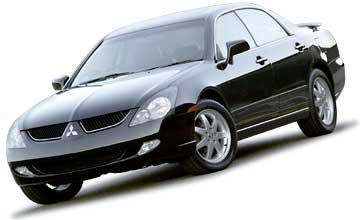|
| |
CAR & Car
Maintenance
Main
Article page |
Beauty articles
|
Health page |
Computers|
Diseases |
Education |
Entertainment |
Family
Business |Fitness|
Fruits and Vegetables
|
Jobs |
General |
Personality|
Technology
|
Tourism |
Sports
Automobile|
Biography Page|
Heroes & Incredible peoples
|
Inventions
|
Useful Tips
Click here:
Car and Bike questions

|
Regular maintenance is health insurance for your car. It needs regular
maintenance to retain its safety, dependability, performance, fuel economy,
and emission control capabilities.
Regular maintenance makes economic sense, too. Low-cost maintenance can
prevent high-cost repairs. Maintenance also helps to prolong the life of
tires, brakes, and other vehicle parts. Regular maintenance is also called
"preventive maintenance" - or PM - because it helps to prevent costly and
dangerous breakdowns and repairs. Moreover, the maintenance recommendations
for a new car are the basis of the manufacturer's warranty. The carmaker
agrees to warrant the vehicle against defects for a specified time or
mileage if the new-car buyer has the scheduled maintenance performed.
What Maintenance Is
Required And When?
The best source of
maintenance information for your car is your vehicle owner's manual. A
list of maintenance services and the time or mileage intervals at which
they should be performed is part of every owner's manual. The
manufacturer wants to help you keep your car in good working condition,
but no carmaker can know exactly how every vehicle it sells will be
used. That's why every owner's manual has different maintenance
schedules for different driving conditions.
Articles:
You may live in a part of
the country where the weather gets very cold in the winter or very hot
in the summer, or both. You may drive only short distances a few times a
week, or you may drive regularly for long periods of time at highway
speed limits. Perhaps you drive in prolonged stop-and-go traffic. Maybe
you live and drive in a very dusty climate. Perhaps you regularly tow a
trailer or carry heavy loads. All of these driving conditions and
requirements affect the maintenance needs for your car.
What Is The Right
Maintenance Schedule For Your Car?
For many years, carmakers
identified their maintenance schedules as "regular service" and "severe
service" schedules. These labels are not as widely used today as they
were in the past, but the concepts still apply. Your car's maintenance
requirements are determined by how you use the vehicle.
"Regular service" as
defined in owners' manuals usually turns out to be very mild service.
"Severe service" means just what it says, but for most motorists, it
turns out to be more normal or regular than "regular service." Here is a
typical explanation of severe service from a vehicle owner's manual:
Are any of these true
for your vehicle?
• Most trips are less than 4 miles (6
kilometers)
• Most trips are less than 10 miles
(16 kilometers) and outside temperatures are below freezing
• The engine is at low-speed most of
the time (as in door-to-door delivery or stop-and-go traffic).
• You operate your vehicle in dusty
areas.
• You tow a trailer or regularly
carry the maximum vehicle load
If any one (or more) of these is true for your driving,
follow Schedule 1.
The manufacturer does not
explicitly label Schedule 1 as severe service, but looking at it reveals
that it calls for oil and filter changes every 3000 miles. The regular
service, Schedule 2, calls for oil and filter changes less than half as
often: every 7500 miles.
|
| Get
Started With Basic Maintenance
To help you get started
developing a maintenance schedule for your car, here are some general
guidelines developed by AAA and other industry sources:
|
| Maintenance
Item |
Mileage
or Time |
 |
|
Inspect
lights and check tire pressure |
 |
|
At
least monthly |
 |
|
|
Oil
& filter change and chassis lubrication |
|
3,000
to 5,000 miles or 3 to 4 months |
|
|
Underhood
belt and hose inspection |
|
3,000
to 5,000 miles or 3 to 4 months (every oil change) |
|
|
Tire
rotation and wheel balancing |
|
6,000
miles or every other oil change |
|
|
Brake
inspection |
|
6,000
miles or every other oil change |
|
|
Replace
air filter |
|
12,000
to 24,000 miles or as indicated by inspection |
|
|
Replace
fuel filter |
|
24,000
to 100,000 miles |
|
|
Automatic
transmission service |
|
24,000
to 100,000 miles |
|
|
Wheel
alignment check |
|
12,000
to 24,000 miles or as indicated by tire wear |
|
|
Cooling
system flush and refill |
|
40,000
to 100,000 miles |
|
|
Belt
and hose replacement |
|
60,000
to 100,000 miles or 5 to 8 years |
|
|
Engine
timing belt replacement |
|
60,000
to 100,000 miles (when equipped) or 5 to 8 years |
|
|
Air
conditioning performance check |
|
Annually,
usually in the spring |
 |
|
|
What Else Does Your
Car Need?
The services listed above
are only the general services that apply to most vehicles. You may need
more frequent checks and replacements than the intervals listed above.
Additionally, your car may have some unique maintenance requirements
specified by the manufacturer. Many overhead cam engines have engine
timing belts that require scheduled replacement. If such a belt breaks for
lack of replacement, expensive engine damage may result. Some carmakers
also call for periodic flushing and refilling of the brake hydraulic
system.
http://www.rushcarparts.com/
- Durable and affordable car parts, auto parts, and truck parts
(
Courtesy: http://www.csaa.com/home/
)
CARS
|
| |
|



